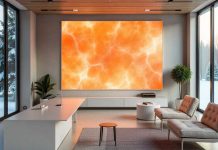Revision rhinoplasty or ‘nose job’ revision surgery is sometimes needed to correct a surgical error or improve facial asymmetry. Revision can be done for medical reasons or purely for aesthetics. Many times, it is done after a botched nose surgery.
Proper and proportionate alignment of facial features, also known as facial symmetry, is a core aspect of physical attractiveness and beauty. The nose, especially, plays a major role in balancing and harmonizing facial features.
Therefore, even a minor flaw, natural or surgical, can cause asymmetrical issues. These problems can persist in any part of the nose, including the upper third, the middle third, or nasal tip.

What is Rhinoplasty?
Rhinoplasty is a safe plastic surgery procedure that is done to correct flaws with the nose itself or to bring it into harmony with other facial features. These are main reasons why nose surgery is so highly sought-after. The common types of rhinoplasty procedures are nose reduction, refinement, reconstruction, and revision. It is discovered that people in countries having a huge fashion industry are more inclined towards different surgeries to achieve an attractive look. For instance, rhinoplasty procedure in New York is very common because the majority of the population wants to look good.
Nose surgery can be beneficial to anyone with a disfigured or misaligned nose due to injury, trauma, or a birth defect. In cases where structural issues like a hole in nasal septum repair are needed, for example, specialized techniques are employed to restore both functionality and appearance. Others who feel self-conscious about the size, shape, or projection of their nose may also benefit from procedures addressing these aesthetic concerns. Additionally, individuals recovering from severe nasal trauma or those dealing with complications from a previous surgery often turn to rhinoplasty to achieve a natural and balanced look.
In any case, here are 10 main reasons for rhinoplasty:
1. Large or ‘big’ nose
2. Abnormally-shaped nose
3. Misaligned or twisted nose
4. Crooked nose bridge
5. Nose too long or short
6. Wide, bulbous, or boxy nose tip
7. Nose bridge hump
8. Poor nose projection
9. Too narrow or wide alar base (reason for flared nostrils)
10. Breathing difficulties, e.g., from a deviated septum
Revision Rhinoplasty Surgery

Abnormalities or irregularities of the nose may persist after the primary rhinoplasty. Rhinoplasty revision surgery is done to enhance the function and appearance of the nose following the initial surgery. Patients may seek revision for various reasons, especially if:
- Their nose didn’t heal right
- They are unhappy with the results of the initial procedure
- The surgeon messed up, e.g., due to improper technique or lack of skill or expertise
- Their nose was broken, injured, or damaged after the initial rhinoplasty
- They want to fix facial asymmetry
- Other aspects of the nose need refinement, e.g., the nose tip
Revision Rhinoplasty Techniques
The cosmetic plastic surgeon will perform the revision procedure using a technique suitable for the specific issue with the nose that is causing asymmetry.
Revision can be performed as closed rhinoplasty by placing the incisions on the inside of the nose. Or it can be done as open rhinoplasty by making the incisions on the underside of the vomer bone (the thin, flat bone that separates the nostrils).
Closed rhinoplasty may be preferred, if possible, since it proves to be less invasive and traumatic to the tissues. It may be safer when there is major scarring from previous nose surgeries.
Open rhinoplasty also has its advantages, depending on the individual case. It tends to provide more exposure and visibility to the nasal bone structure and cartilage. An open approach can be especially useful in complicated cases.
Common Issues Fixed During Rhinoplasty Revision
Even a minor flaw with the nose is usually obvious because the nose is a prominent feature on the face. There are various reasons why you may seek revision rhinoplasty to improve asymmetry. Perhaps you’ve had a rhinoplasty procedure done and you were left dissatisfied with a nose that is out of balance with the other features of your face.
Or maybe you suffered an accident or trauma after getting a nose job and you need to get a revision rhinoplasty to improve facial asymmetry. Fortunately for you, if done correctly a revision rhinoplasty can fix asymmetry issues related to:
- Over-reduction of the nose
- Overly-shortened nose
- Uneven nostrils
- Excessive scar tissue
- Nose bridge irregularities
- One side of the nose looks different from the other
- Difficulty breathing
- Nasal valve collapse
- Crooked nose bridge or nose tip
Creating or Recreating Symmetry With Revision Rhinoplasty
Nasal symmetry has the overall benefit of improving attractiveness, beauty, and self-confidence. Creating or recreating symmetry can be done by adding or removing cartilage. Additional cartilage also helps balance nasal proportion, reshape, and open the airways. Problems caused by too much remaining cartilage after the first surgery are generally easier to fix.
All the surgeon has to do is go back and remove more nasal cartilage. When there is not enough in the nose, extra cartilage can be taken from the nasal septum, ear or rib.
During revision, the nostrils can be narrowed, the nose tip lifted, or the nasal bone structure reshaped and contoured to add elegance and finesse. Sometimes, a simple tweak here and there is enough to blend the nose with other facial features.
Finding a Revision Rhinoplasty Surgeon
Nose surgery is a conservative procedure which calls for specialized skills, precision, and accuracy. This makes it imperative on you to seek and find a plastic surgeon that is not only board certified but highly skilled and experienced in performing revision rhinoplasty.
You may even go a step further to find out if the surgeon has expertise performing the procedure necessary to fix the particular nose flaw you have, for example, a twisted nose bridge.
If you’re seeking revision due to a botched primary rhinoplasty, then buyer beware! To reduce the risk of another nose job gone wrong, you should check all the surgeon’s credentials.
Dr. Andrew Jacono is a board certified, world-recognized revision rhinoplasty specialist. He operates from his surgical practice, New York Center for Facial & Plastic Surgery, in New York City.










